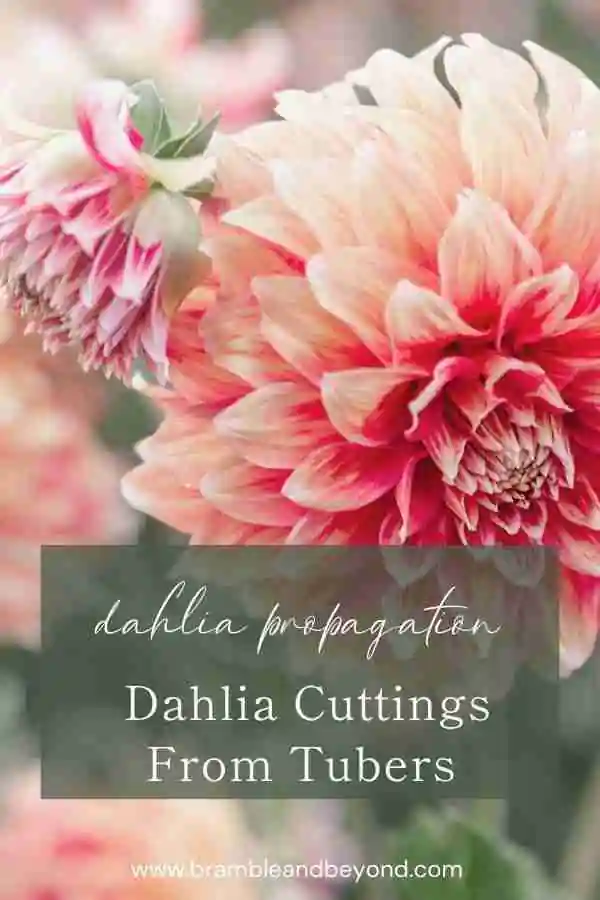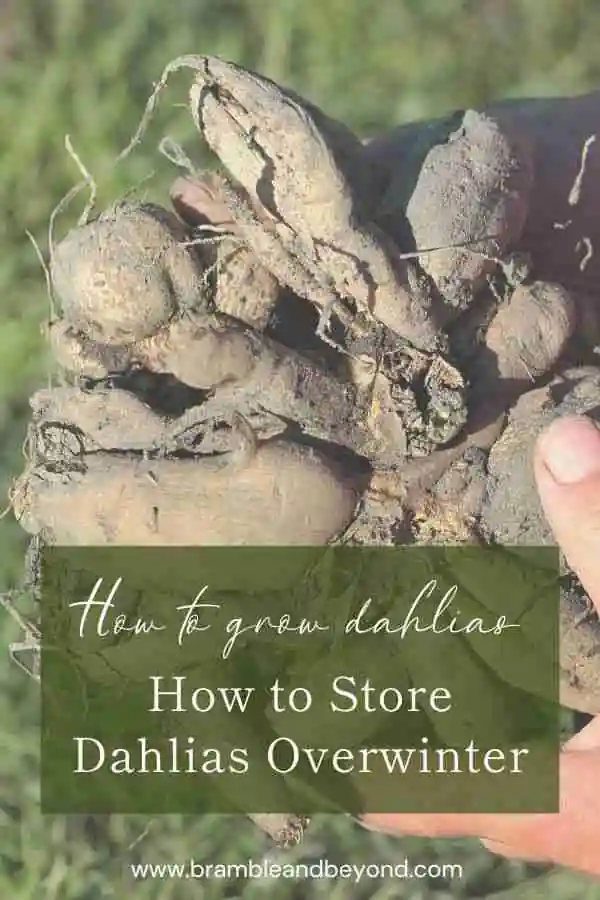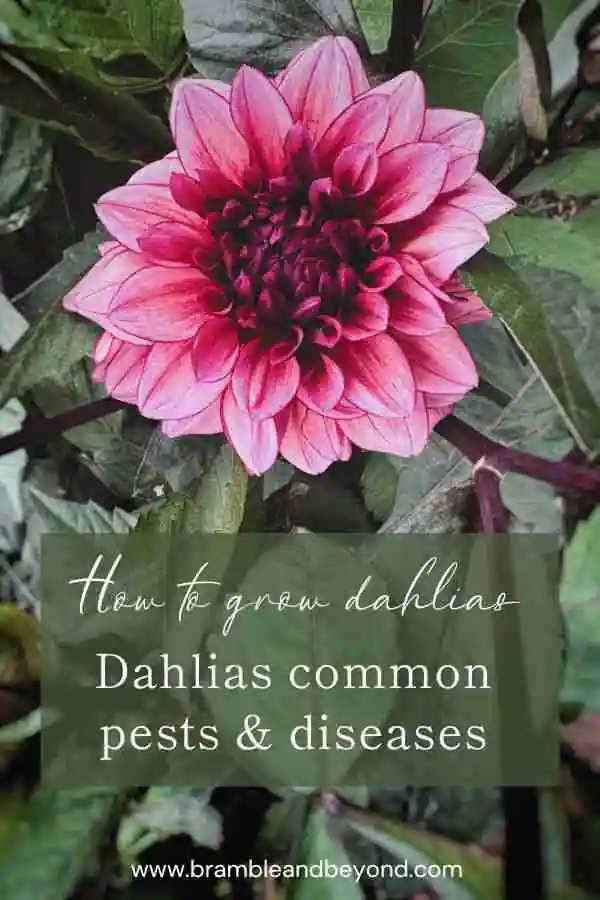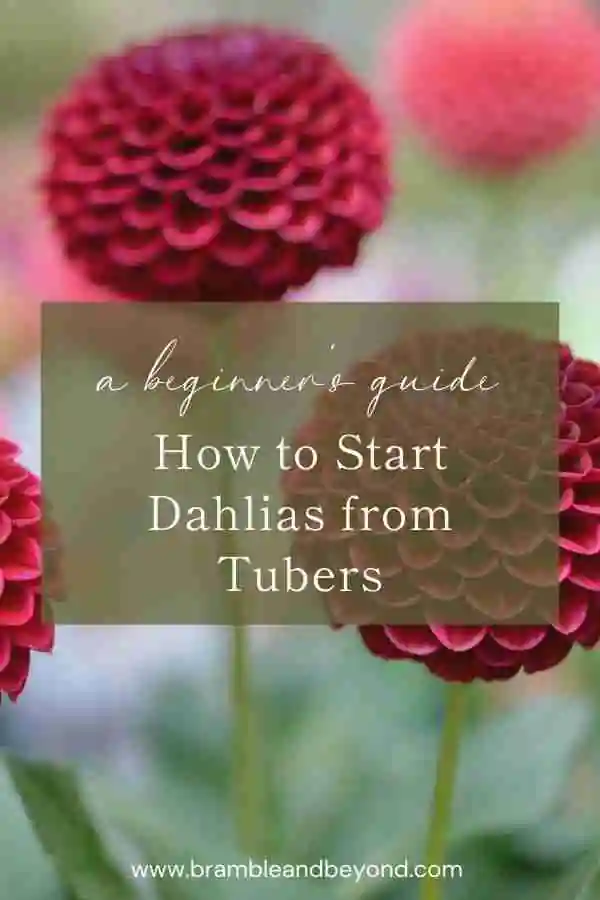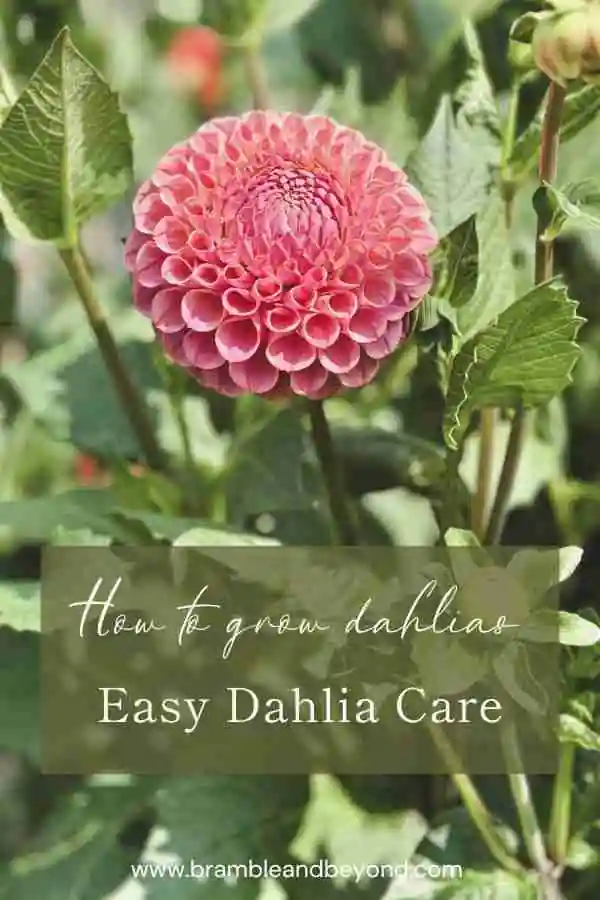Disclosure: This post may contain affiliate links, meaning I get commission if you decide to make a purchase through my links, at no cost to you. Please read my Affiliate Disclosure for more information.
Hello, fellow dahlia lovers! Today we’re going to talk about something that always brings a dash of colour and a ton of joy to our gardens – dahlias! Specifically, we’ll focus on finding the perfect answer to the question, “When to plant dahlias?”
Understanding dahlias
First things first, let’s get to know our dahlias a little better. Dahlias are incredibly diverse, available in a wide range of colours and forms. They’re the perfect addition to any garden or cut flower garden, bringing with them a unique vibrancy that’s hard to find anywhere else.
Dahlias flower later in the season (can be from mid summer) when most everything else is beginning to fade. But, once they start flowering, they are massively productive right up to the first frosts.
Dahlias are perennial, but are tender to frost, so if you live in a cold climate, frost protection will be required. Because Dahlias are tender perennials, then planting dahlias at the right time is crucial and is key to a sustainable, eco-friendly garden.
When to plant dahlias
Dahlia tubers, the part of the plant that’s underground, are especially sensitive to frost. Hence, it’s important to wait until the weather is warm enough before planting out. They can tolerate a bit of frost on the leaves without killing the plant (this is more relevant in autumn, rather than new spring growth), but if the tuber freezes, then that will be the end of the tuber.
Here in the UK, it is advisable to wait until the last frost date has passed before planting your dahlias outside. For me, this is usually around mid May.
However, depending on your approach to growing your dahlias you have two options of when to plant dahlias.
Planting dahlias from pots
Starting your dahlia tubers in pots is a wonderful way to get a jump on the growing season, as long as you keep them safe from frost.
You can begin the process indoors while it’s still frosty outside, and then transfer them outside once the frost has passed. This gives your dahlias a little head start and also gives you a great opportunity to take cuttings to duplicate your dahlias for free.
I usually unpack my dahlias from their winter protection and pot them up some time in March. This gives them enough time to put on signifiant growth ready for planting out late May (usually when the tulips are just finishing).
Another added benefit is that because the growth is more mature, the stems are not so tasty to slugs and snails. It won’t prevent all slug attacks, but the plants will be a lot more robust by this point so that they can generally withstand a few nibbles.
Planting dahlia tubers outside
If you have no space to protect your growing dahlias from frost, then you might want to consider planting your dahlia tubers directly outside. You’ll, again, have to wait until after the last frost has passed, and ideally when the soil is sitting nice and warm at around 50oF, or 10oC, at your planting depth.
Many flower farmers follow this approach, as the space and compost needed to pot all their tubers first becomes unmanageable. They do this with great success. Although, it helps if you live in a warmer climate, as you can get them out sooner so they start growing earlier.
It’s definitely a simpler and more straightforward approach. However, with the chilly and damp spring weather here in the UK, I haven’t quite taken the leap of faith yet.
By following this method, your dahlia tubers might take a bit longer to kick off, but once they start, they grow quickly and come out stronger. They might bloom a tad later than the potted versions, but really, it’s only about a week to ten days difference.
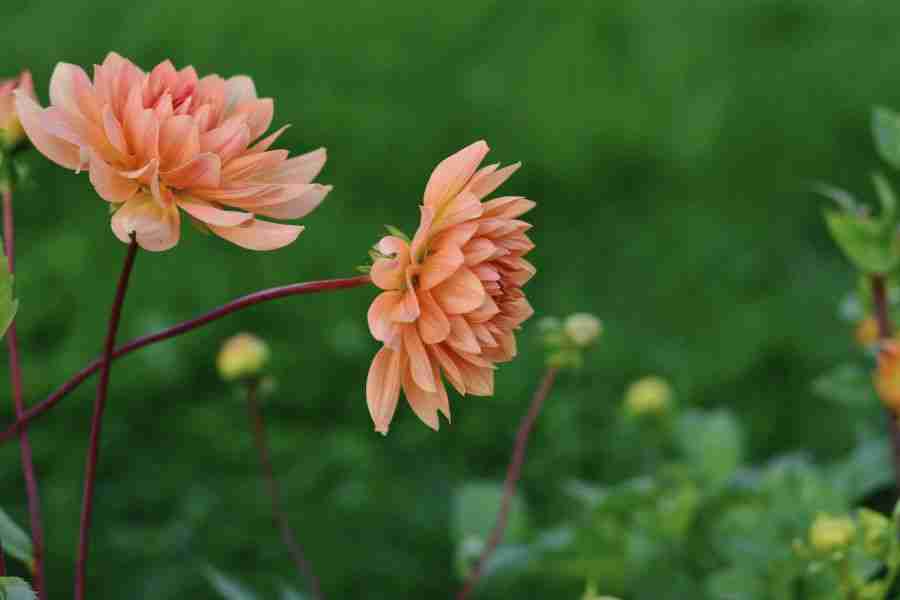
Dividing your dahlias
Before you start planting your dahlias then it is useful to consider the size of your tuber. If the tuber is too large, then you get an increasing amount of foliage and poorer quality blooms.
To give a reasonable sized plant means it is often good to divide your tubers into smaller clumps, every few years. I would say the maximum size of a tuber should be about 20cm (8 inches) in diameter, about the size of a large open hand. The tuber can double its size in one years growth, and by dividing a large tuber into smaller pieces you get more plants for free!
I’ll cover how to divide your tubers in another post.
Positioning your dahlias
Location, location, location! Dahlias love the sun, so you’ll want to find a spot in your garden that gets at least six hours of sunlight each day. This will help your dahlias grow strong and healthy and encourage lots of flowers.
Mulching your dahlias
Mulching is simply covering your soil with organic material to suppress weeds and keep the moisture in. You can use anything as a mulch, but with dahlias it’s usually best to try and use something that will also feed your dahlias.
I generally use home made garden compost, or farmyard manure, depending on what is available.
Just a word of warning, I used straw last year to mulch my dahlia beds, and whilst it did a fantastic job of suppressing the weeds, it seemed to be a breeding ground for slugs and snails in our damp spring, so it was a bit of a disaster.
This year I am going to try wool pellets from Aamazon, as apparently slugs hate crawling over wool, I shall let you know the results.
Dahlia spacing
Spacing is crucial when planting dahlias. Planting them too closely can result in fewer and smaller flowers. Plus, it makes it more difficult for the plant to get the nutrients it needs to thrive.
If you are growing flowers just for cutting then you can usually get away with planting them closer together than you would in a garden bed. Doing this also enables them to support each other a bit.
However, I like to plant my dahlias giving them a bit of room to grow into, so they have a bit of air around them to minimise the spread of pests and diseases.
When you’re planning your garden, try to plant dahlias of similar sizes together. This way, you won’t have a bigger dahlia overshadowing a smaller one. From my experience, dinner plate dahlias tend to be larger, whereas pompoms are usually smaller, and decorative dahlias are somewhere in the middle.
I learned the hard way last year when I tried to match the dahlias by colour rather than size – I ended up losing a few smaller ones when the big ones took over. I won’t be doing that again!
As a general rule of thumb, smaller dahlias should be planted about 30-40cm apart, while larger ones need about 70-90cm between each plant.
How to Plant Your Dahlias
Planting out a dahlia is one of the easiest steps to the whole dahlia lifecycle.
Dig a hole big enough to take the tuber, usually 12-15cm deep, and work in a small handful of fish, blood & bonemeal, from Amazon ,into the soil, so it does not come into direct contact with the tuber. This is optional, and will depend on the quality of your soil.
Place the tuber in the hole, with the eye (the little bump where the stem will grow from) facing upwards. Cover the tuber with soil. The top of the tuber should be about about 5-10 cm (2-3 inches) above the tuber.
If you have pre-sprouted your dahlias in pots then planting them out is pretty similar to any other plant, making sure the tuber is well covered.
Then water them in well.
Once the plants get established, I like to remove the lower leaves, to allow more air flow around the base of the plant, and to discourage pests.
Here is a video I recorded on how I planted my dahlias last year.
Tips for growing your dahlias
- Divide your dahlias: To produce good sized productive dahlia plants, it is a good idea to divide the tuber every few years. If the tuber is too large, then you get increasing amount of foliage and poorer quality blooms.
- Starting your dahlias: From March onwards you can start your dahlias tubers growing in pots in a protected growing space. The space doesn’t need to be heated, but it does need to have light and be protected from frost.
- Propagate your dahlias: Once your potted up dahlias start producing more than 5 new shoots you can take cuttings of any of the extra cuttings, to create new plants that will flower and create a tuber within this growing season.
- Pinch out shoots: Once you have stems that have a few sets of leaves, then pinch out the growing tip. This will encourage the plant to produce more lateral growth and flowering stems.
- Planting: When planting your dahlias, plant out the plants deep enough to cover the tuber. Place the tubers about 15cm (6 inches) deep. Space the tubers/plants about 40cm – 70cm apart. Only plant out once the risk of frost has passed. In the UK this is generally mid May.
- Watering: After planting, water them in well. After the initial watering, I prefer to water all my plants (if I need to water) with a long deep drink, rather than a light consistent watering. I think this encourages the plants to go in search of their own water, making them more drought tolerant.
- Provide support: Dahlias, especially tall varieties, will need staking or other support to prevent them from toppling over under the weight of their blooms. It is best to get this in place before you need it, rather than waiting until it is too late.
- Protect from pests: Avoid chemical pesticides in your dahlia bed. Instead, encourage beneficial insects, try companion planting, use physical barriers, or try homemade, eco-friendly sprays.
- Protect from frost: In the autumn, after the first frost, either cut back your dahlias and mulch heavily to protect the tubers over the winter. Or lift them and store them somewhere cool and dry overwinter.
Remember, planting dahlias at the right time and in the right way can make all the difference in their health and blooming.
So, there you have it, a complete guide on when and how to plant dahlias. Gardening is a journey, and every plant we nurture brings us one step closer to creating a sustainable, eco-friendly garden.
Happy gardening!


